Part two – The Age of Legends
As we return back to the crease after a spot of lunch in the pavilion, we can see an exciting innings ahead of us, to follow the story of the great dynasties that were already growing in Pudsey cricket at the start of the 20th Century.
Previously we looked at the foundations of the first teams, and the clubs that are still playing today.
Importantly it’s the family tradition that roots cricket so deeply in Pudsey that we now follow, picking up from where ‘Long Tom’ Tunnicliffe bowed out and Major Booth now confidently walks out to the middle.
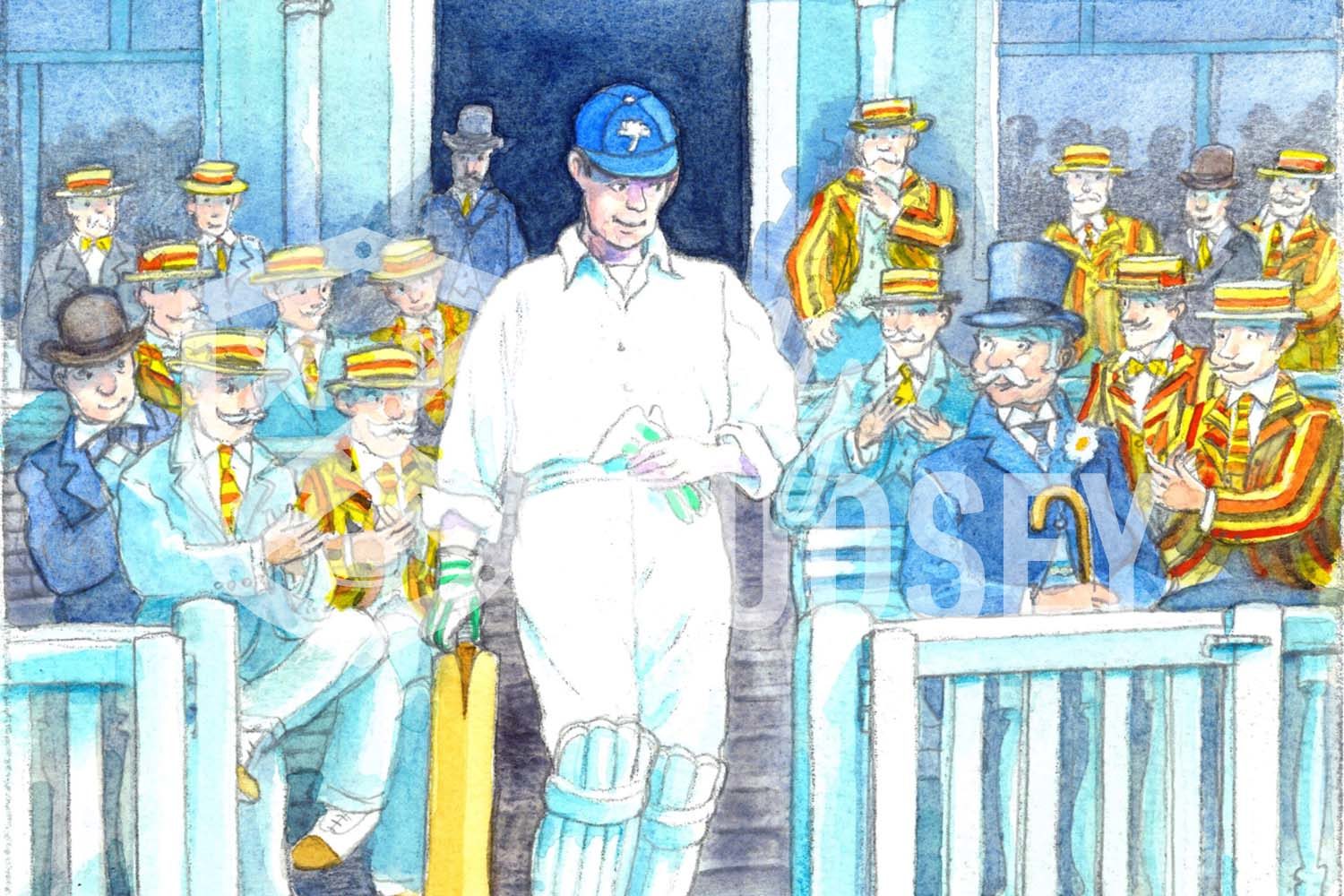
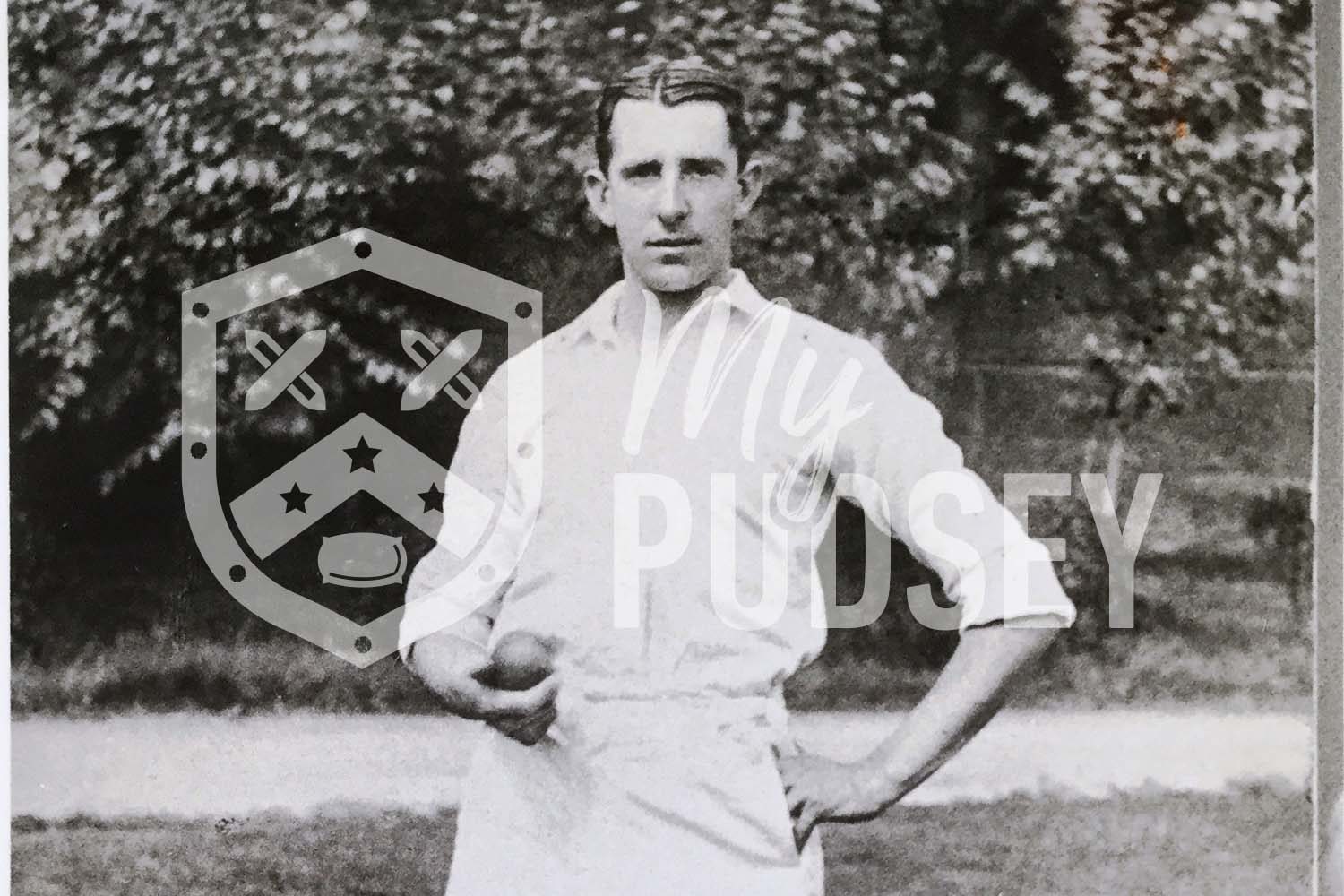
Major William Booth (late Second Lieutenant 15th Bn WYR ‘Leeds Pals’)
Major Booth, the second son of James and Louisa Booth was born on 10th December 1886 in Lowtown. His father James was the famous grocer and storekeeper who ran two shops on Lowtown – his name now graces Booth’s Yard. Major (his given name an old tradition of picking Grandmothers maiden names for boy’s first names) had two older sisters and a brother; Annie, Sarah and James Cecil Booth. James Snr was doing well enough to educate Major at the prestigious Fulneck School, which had its own cricket pitch, pavilion and teachers willing to coach the game. One of those teachers was a Mr J.W. Overend who was to later coach the art of cricket to Len Hutton.
Major found that he loved cricket and quickly proved himself to be a capable all rounder and athlete, also excelling at football (he was on the books at Bradford City and Doncaster Rovers). It was through cricket that he went on to represent Pudsey St. Lawrence alongside other well local knowns; Henry Hutton, Herbert Sutcliffe and Richard Ingham.
A popular and good looking chap, Major was well on his way to stardom. By 1910 Booth had secured a regular place in the Yorkshire first team, and in 1911 he scored 1,125 runs for his county and took seventy-four wickets, with a highest innings of 210 against Worcestershire. Continually improving, in 1913 he took 158 wickets for Yorkshire, his aggregate of 181 wickets in first-class matches being the highest of any bowler that season. He also added another thousand runs with the bat.
Because of this stellar performance he was selected for the Players at Lord’s (the early England team) and went on tour with the squad in South Africa. The outbreak of War in July 1914 curtailed a what looked like a promising career…
Major Booth volunteered for the West Yorkshire Regiment 15th Battalion (the Leeds Pals) as a Sergeant, and was later commissioned as a Second Lieutenant on 16 July 1915. He first served overseas in Egypt from 22 December 1915 before being shipped to the Western Front. The Leeds Pals went “over the top” during the first day of the battle of the Somme, 1st July 1916, followed a short while later by the Bradford Pals (one of whom was Abe Waddington later to become a famous cricketer for Yorkshire and England).
Whilst leading his section across no-mans land, Major was hit by shrapnel close to his heart. Waddington was also hit and found himself in a shell hole with the fatally injured Booth and held him until he died. Stretcher bearers were able to rescue Waddington later in the day, but Booth’s body remained in the shell hole until the following spring. His remains were only identified by the MCC cigarette case he carried in his pocket. Major Booth is now buried in Serre Road Cemetery No.1 in France.
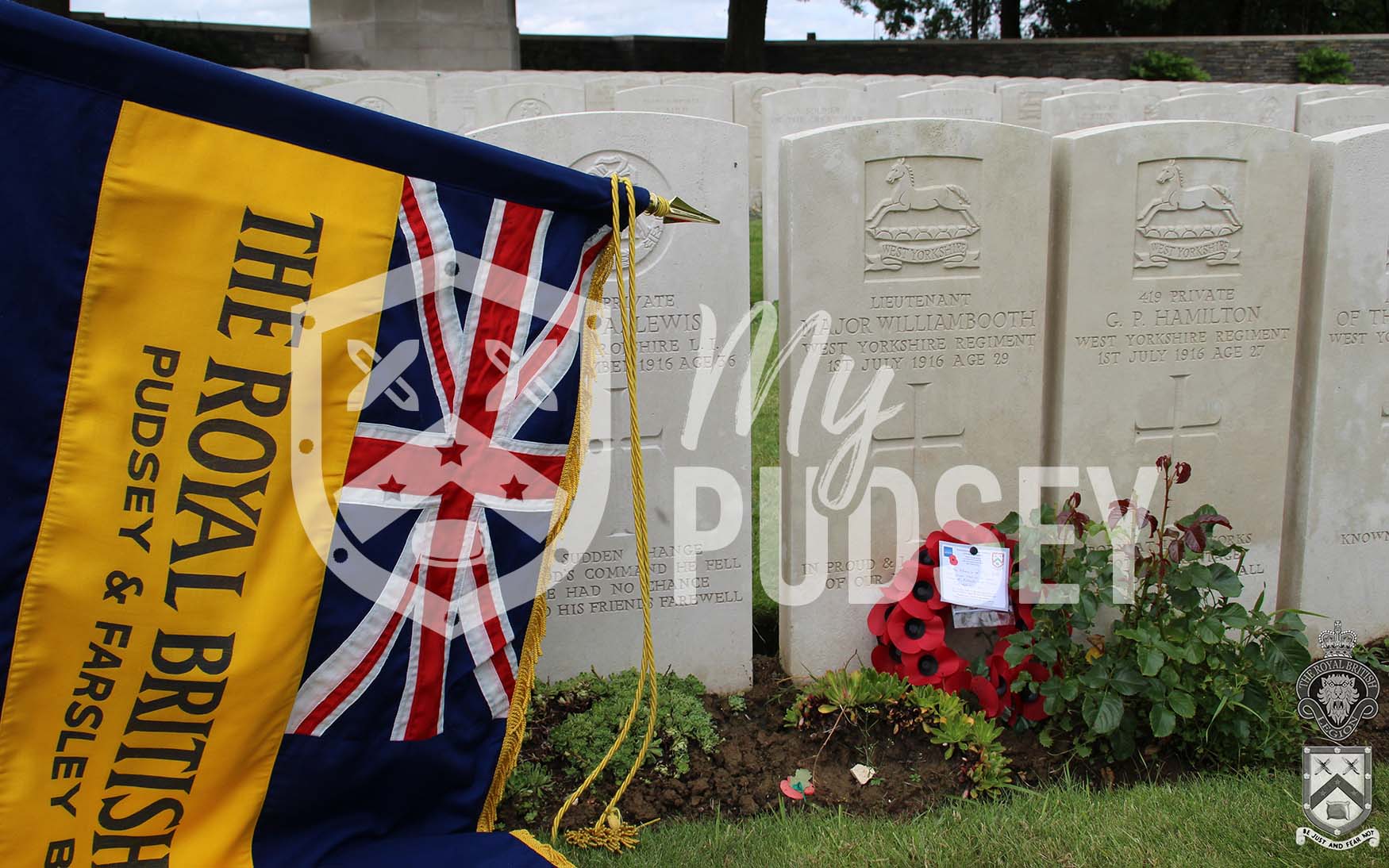
Major’s sister Annie was so upset that she refused to accept that he was dead, and kept his room as he’d left it for many years. Annie lit a light in the window of their Pudsey home every evening in the hope of his safe return.
Along with Major Booth, we can safely assume, given the popularity of cricket in the Town, that most of the lads named on our Cenotaph would have been cricketers either with Clubs playing in the Bradford League or the Sunday School league teams.
The greatest opening partnership of all time?
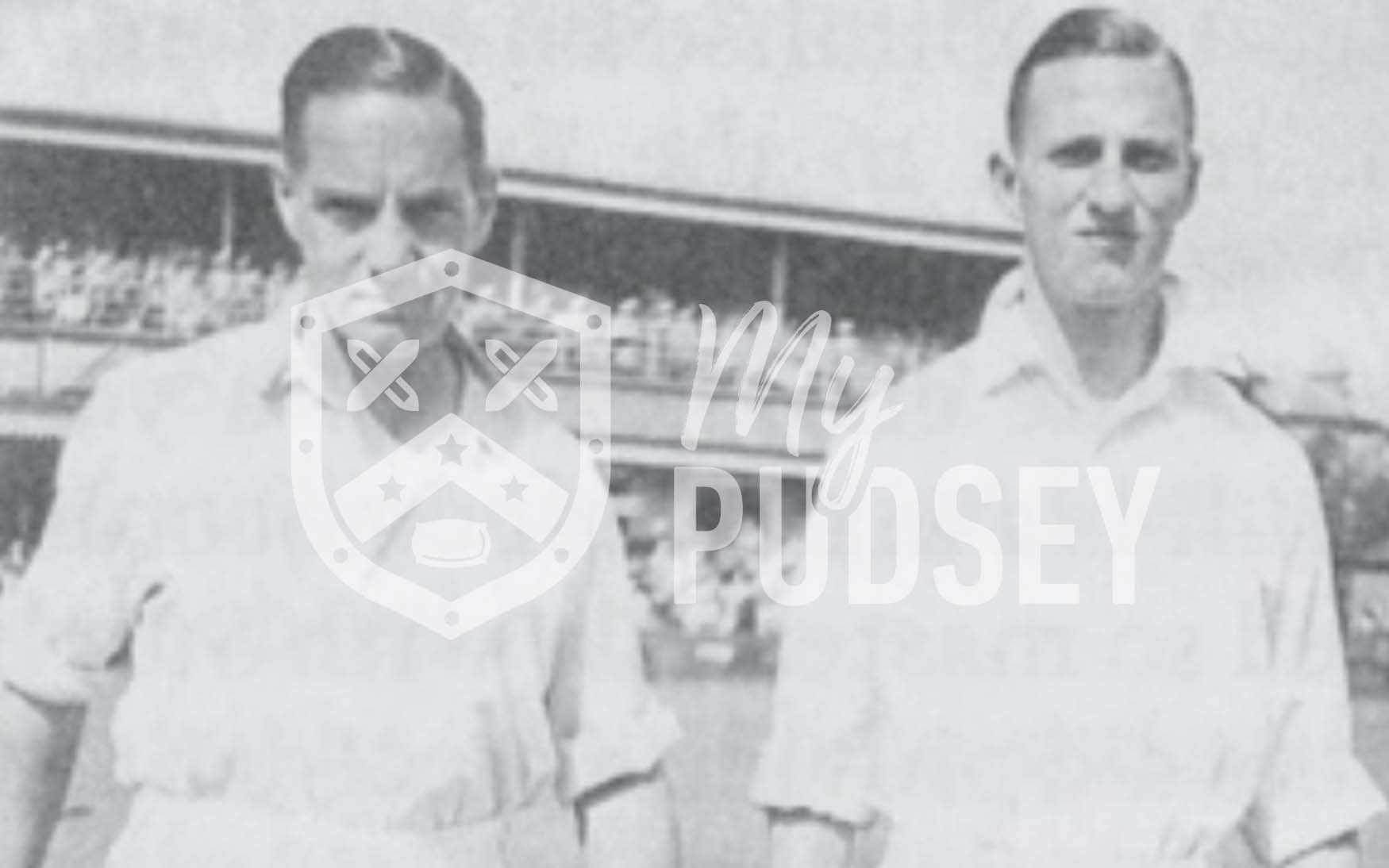
The opening batsman positions in the All-Time Yorkshire XI are reserved for two Pudsey men who can lay claims to be the best opening cricketers ever produced anywhere in the world…
Herbert Sutcliffe scored 38,558 runs for Yorkshire, at an average of 50.20. He played 54 Tests for England, aggregating 4,555 runs at 60.73. He stands at the top of opening batsmen the world over in terms of batting average.
Fellow Pudsey legend Len Hutton started his career just as the great was Sutcliffe ending his. In a few matches in the late 1930s they walked in to bat together. In all, Hutton played 341 times for Yorkshire, scoring 24,807 runs at an average of 53.34. In 79 Tests for England, he made 6,971 runs at 56.67. He was England’s first professional captain.
Both Pudsey men have gates in their honour at Headingley Cricket Ground, as well as the Blue plaques and Hutton gates at Pudsey St Lawrence CC.
Herbert Sutcliffe – Pudsey’s first International Legend
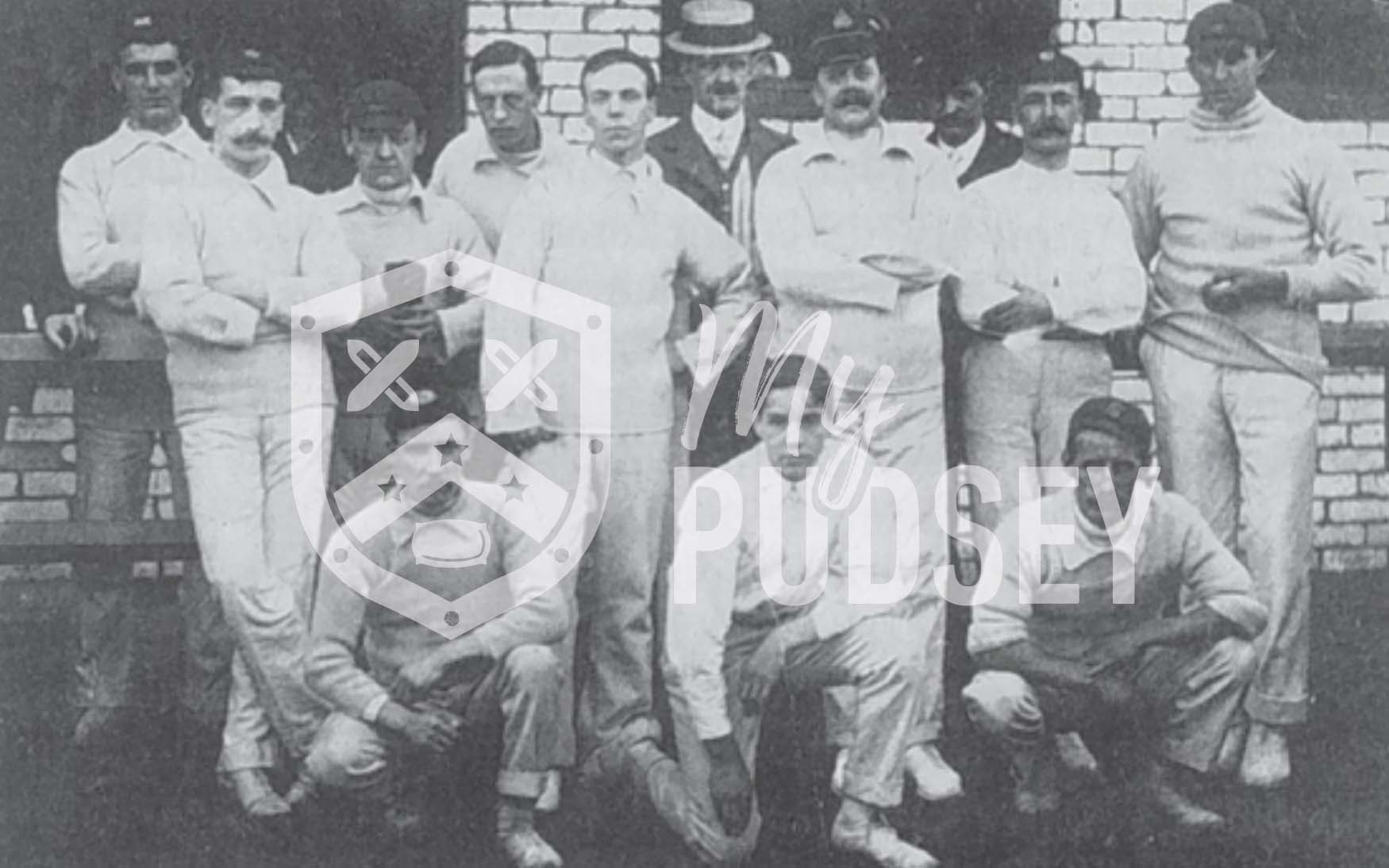
What appears to be an exhibition match at Pudsey St Lawrence’s Tofts Rd with the old pavilion circa 1910.
The first three on the back row are Frank Wilson, W. Hobson and J.W.Lawson. Club President Sir Walter Forrest is in the straw boater, team Captain Richard Ingham (Mayor of Pudsey 1922-23) is on his left. Major Booth is on the extreme right. On the right of the front row is Henry Hutton (later to be father of Sir Len Hutton). Next to him is the 15 year old Herbert Sutcliffe, future super star and son of St Lawrence stalwart the late William Sutcliffe.
Born at Summerbridge in 1894 to William and Jane, Herbert moved to Pudsey when his father took on the Kings Arms from his own father George. For many years the Kings Arms doubled as the St Lawrence club HQ.
William Sutcliffe was a cup winning all round cricketer and also a keen rugby player. Willie died suddenly in 1899, after twisting his bowel in an earlier rugby game, it was fatally aggravated in a cricket match, he was only 34. Worse was to follow as Jane passed away from consumption in 1904 leaving their three sons as orphans.
Herbert and his brothers Arthur and Robert were now raised in Pudsey by their aunts Sara, Carrie and Harriet. Members of the Congregational church which had its own successful team – they ensured the 3 boys were brought up in the correct Pudsey Cricket tradition. Herbert quickly shone as a batsman and moved up from the Congs to St. Lawrence.
He played his first game for the Saints in short trousers, and batting at number 6 saved the match. Richard Ingham remarked “Play like that lad and one day you will play for England”. Herbert’s time with St Lawrence was short lived though, he struggled to get from work across Pudsey to attend net practice, which meant missing out on getting picked for the Saturday game. He was soon lured from the Top Enders, to the Bottom Enders at Britannia Cricket Club which was easier to get to and gave him more net time. The rest as they say is history…
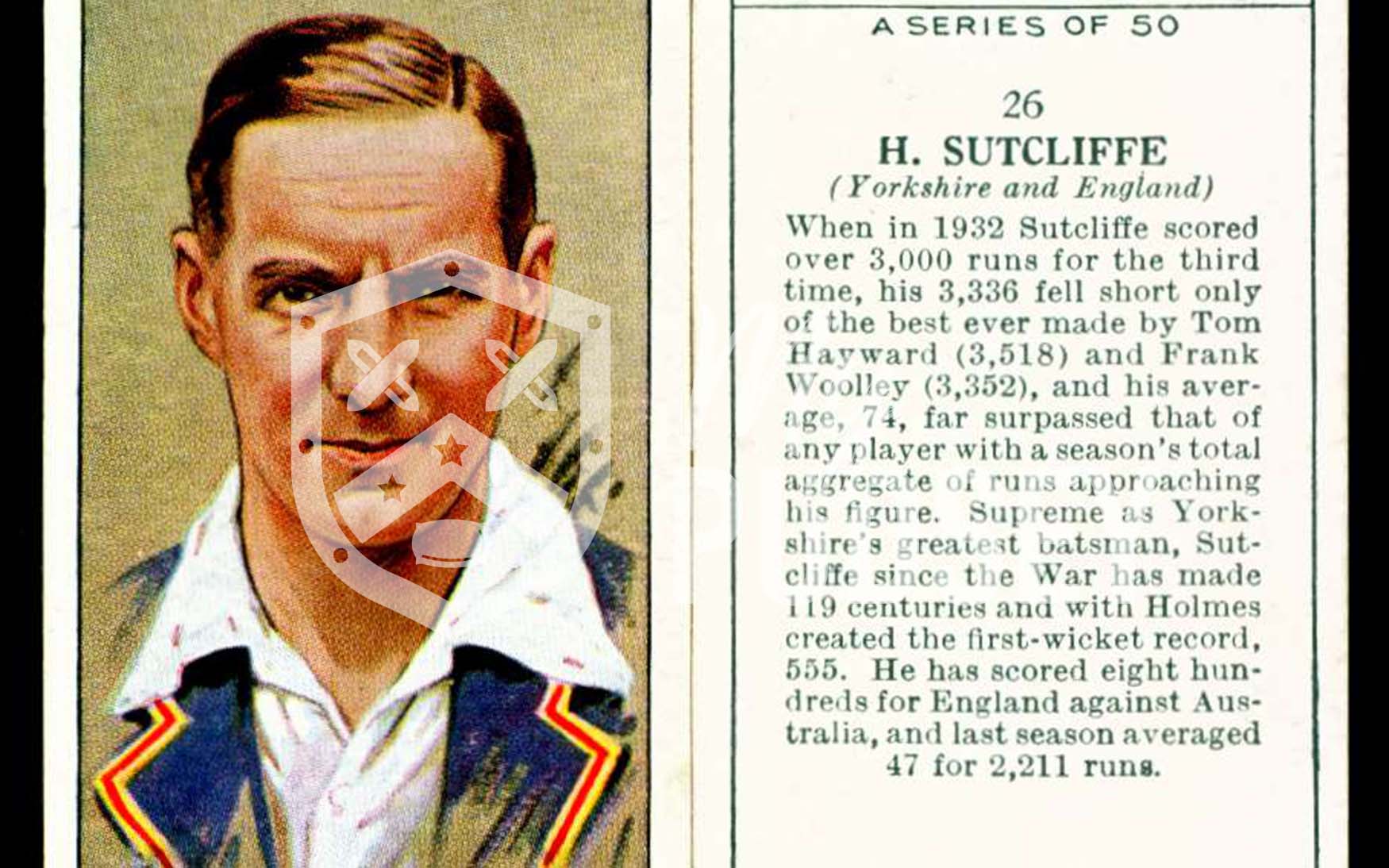
Herbert went on to represent Yorkshire and England as an opening batsman. Sutcliffe was noted for his concentration and determination, qualities which made him invaluable to his teams in adverse batting conditions; and he is remembered as one of the game’s finest “bad wicket batsmen”.
His first-class debut was delayed by the First World War until 1919, having served as an officer with the Green Howards but then became:
- First Yorkshire player to complete 100 centuries, and the seventh overall to achieve the feat
- With Yorkshire won the County Championship 12 times.
- Played in 54 Test matches for England
- Famous for the opening partnership he formed with Jack Hobbs for England between 1924 and 1930
- First cricketer to score 16 centuries in Test match cricket
- Toured Australia, where he enjoyed outstanding success. Including the controversial “bodyline” series
- His completed career batting average of 60.73 is the highest by any English batsman and the fifth-highest worldwide
- Also for the opening partnership at Yorkshire with Percy Holmes, achieving a then record stand of 555 runs against Essex
In his last few seasons for Yorkshire, Herbert partnered the young Len Hutton, helping him develop his game and paid this tribute: “I am specially happy about Len Hutton because he comes from Pudsey and so will carry on what I am pleased to think is the Pudsey tradition.”
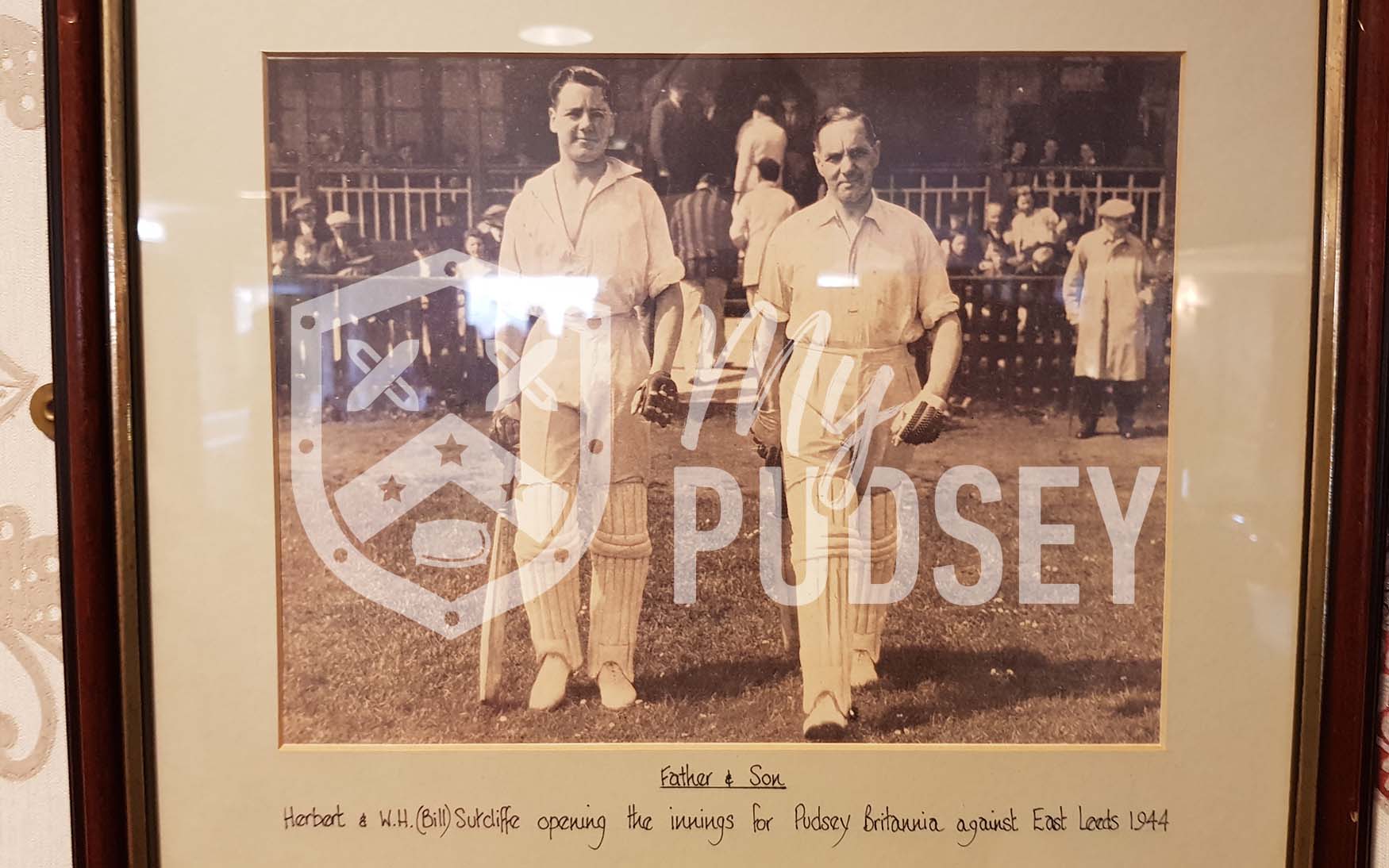
All of this success and talent was nurtured by the fantastic grass roots support back home in Pudsey, and Herbert would often return to Pudsey to a heroes welcome (pathé)
Sutcliffe became a successful businessman by using the money he earned as a player to establish a sportswear shop in Leeds. When his playing career ended, he served on the club committee at Yorkshire for 21 years and for three years was an England Test selector. Among the honours accorded him have been the commemoration of a special set of gates in his name at Headingley, home of Yorkshire County Cricket Club, and his induction into the ICC Cricket Hall of Fame.
Sir Leonard Hutton – England’s first professional Captain and record breaker
We return to Fulneck to meet the Hutton family with their Moravian connections, hard graft and cricket in their genes.
The Hutton love of cricket came from Elizabeth Milner who married William Hutton; Elizabeth’s two brothers Sam and Jonathan were members of a Saint Lawrence team that had challenged the Pudsey Britannia for a winners purse of a whopping £50. William’s son Henry, a renowned local mason and builder also became a great player at Pudsey St. Lawrence thanks to Aunt Elizabeth’s influence and his Uncle’s coaching.
Henry and his wife Lily had 4 sons and two daughters and the tight nit family lived at number 5 Fulneck with Aunts Mary, Louise and Florence nearby.

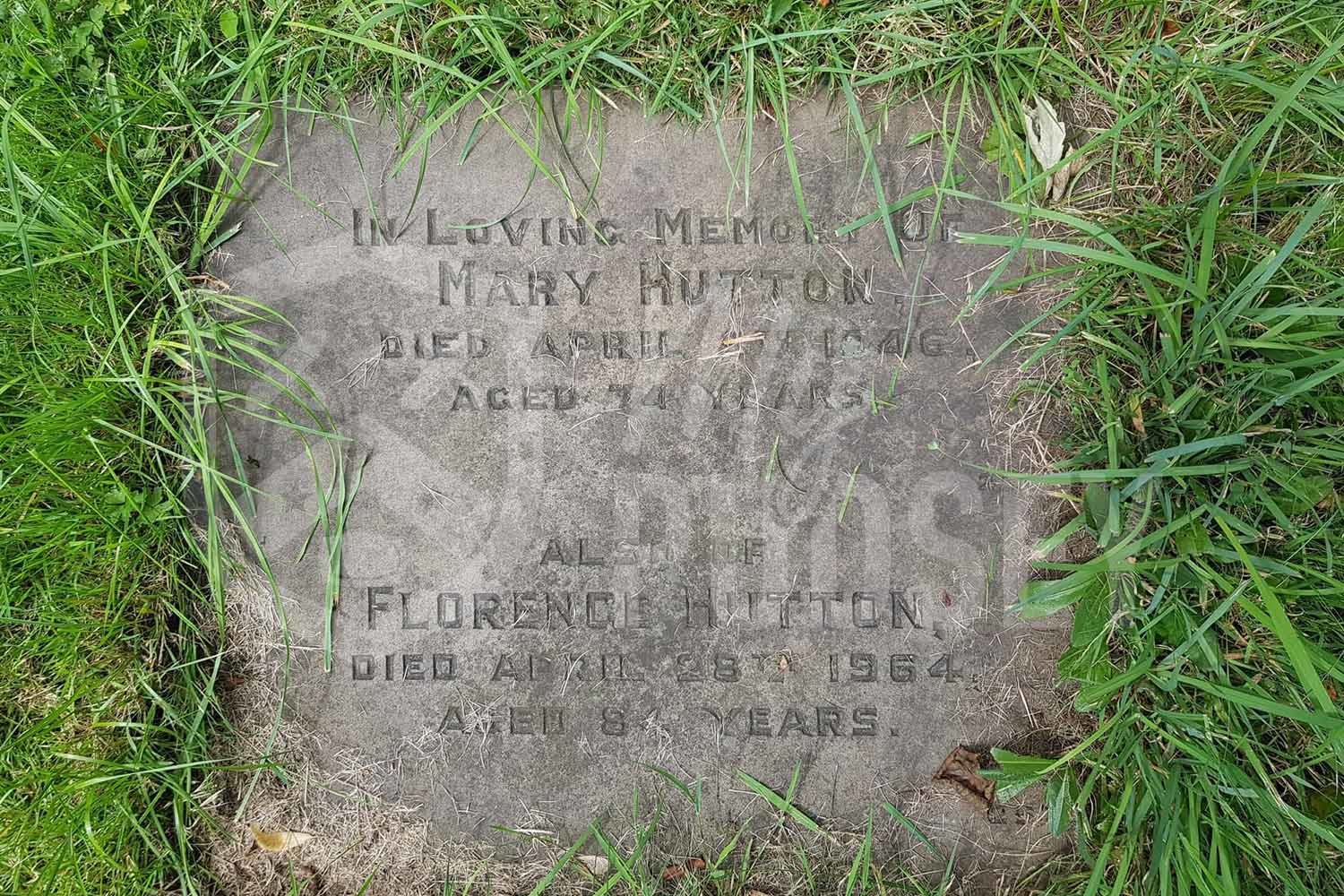
All four boys took to cricket, in fact the settlement cricket pitch was in the cow field just opposite their cottage (note the boarding school pitch was further up the hill). It is said that the young Len was taught to keep a straight bat and tight footwork on the narrow pathway of their Fulneck cottage by Aunties Mary and Florence, they gave him a bat for his second birthday. He was soon over the wall and into the cow field playing matches with his friends though.
Henry Hutton and (Alderman) Simeon Myers would give the lads a bit of practice on a summers evening, Len recalls his father saying:
“Come on Len go home to bed”
“Nay, give us a bit longer”, Len replied.
“You’ve had enough”
“Just six more balls then”
“And” (remembered Simeon Myers) “we bowled him another six balls…he hit everything. It was later on that young Hutton’s dad told me Len was going to make the best cricketer in the family.”
As Len developed he took tutelage from Mr J.W. Overend and the Minister Charles Mellowes on the bigger field of the Fulneck Girls School. Len and five of his friends decided to join Pudsey St. Lawrence Juniors, and they were there until late every night. Even Old George the groundsman had a hard time to get them to pack up and go home!
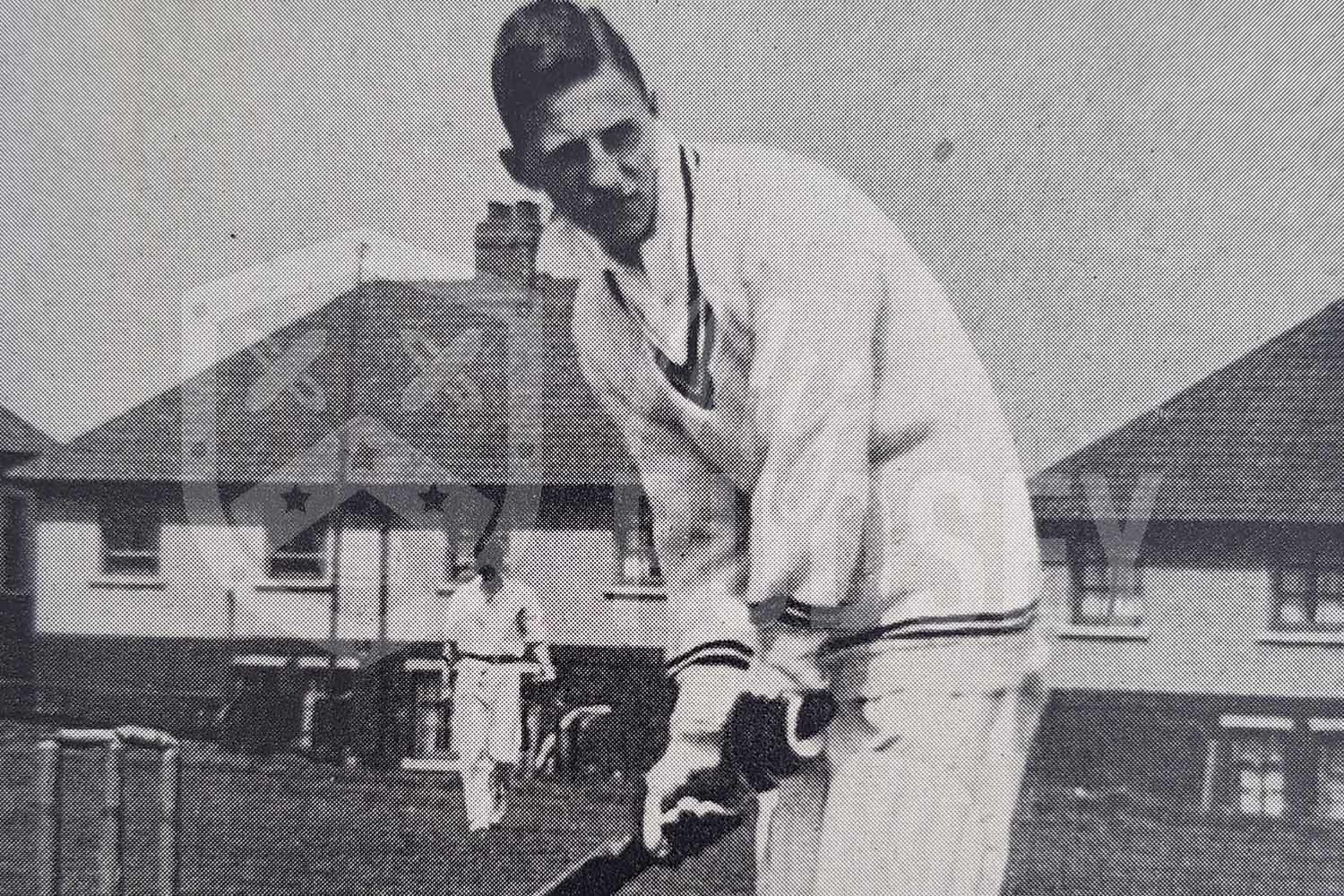
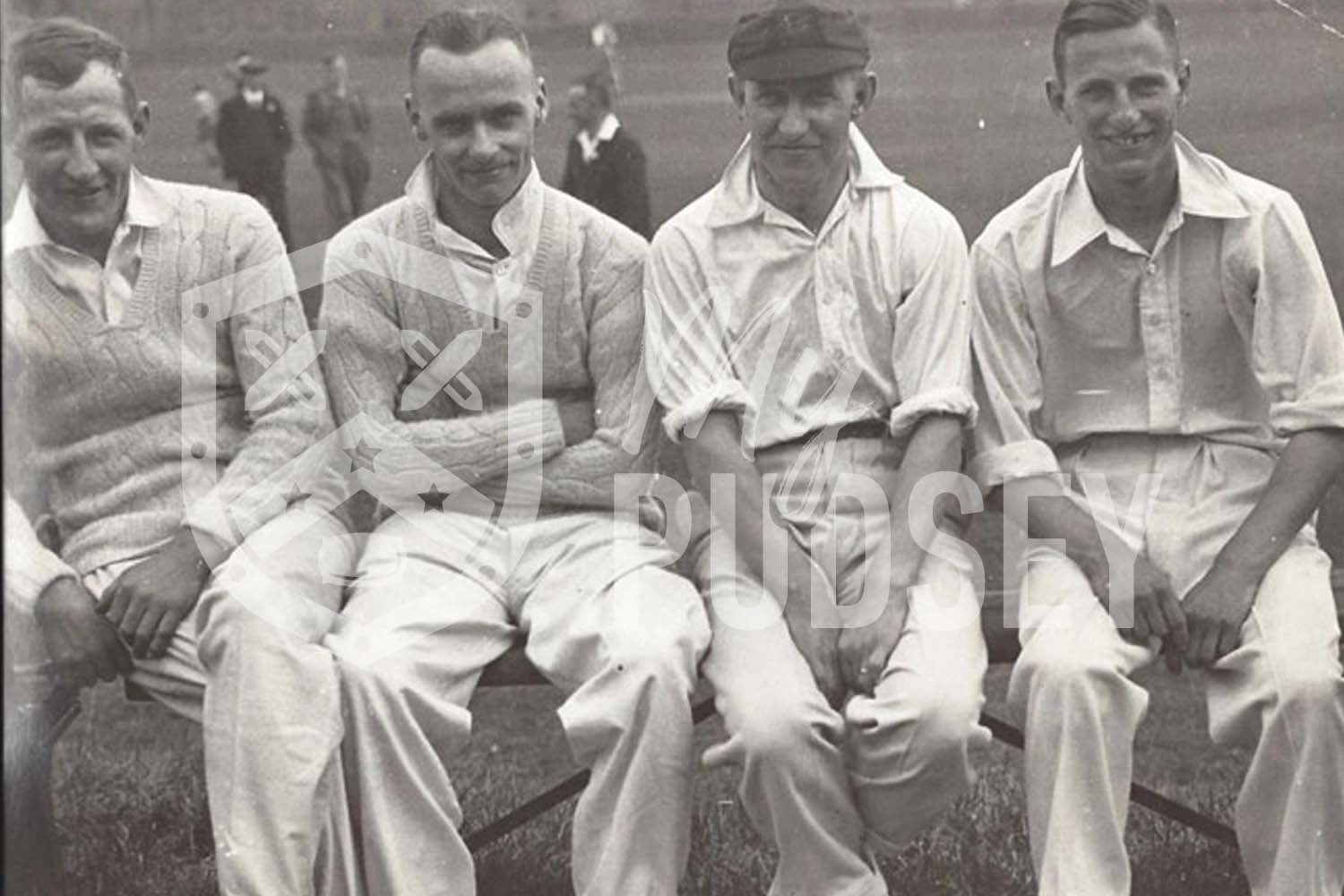
Henry Hutton and his sons Edmund, George, Reg and Len would all play for Pudsey St. Lawrence in the Bradford League. The young Len first played for the Saints aged just 12. The future star first met Herbert Sutcliffe when Len visited his Pudsey’s home to choose a cricket bat from the range stocked in Herbert’s shop, and also receive some valuable knowledge from the world’s best player. Len was soon to be recommended to Yorkshire by Sutcliffe as a prospective academy player.
This led Len to travel down to Headingley for a County trial in the February of 1930, where he was introduced to Yorkshire legends George Hirst and Bill Bowes. George said to Len “You are Leonard Hutton aren’t you? You come from Pudsey don’t you? Well just keep your eyes open and watch, and you’ll be alright.”
These two top bowlers helped Len hone his batting style to a first class level.
He went on to play as the leading opening batsman for Yorkshire County Cricket Club from 1934 to 1955, and was selected for England in 79 Test matches between 1937 and 1955.
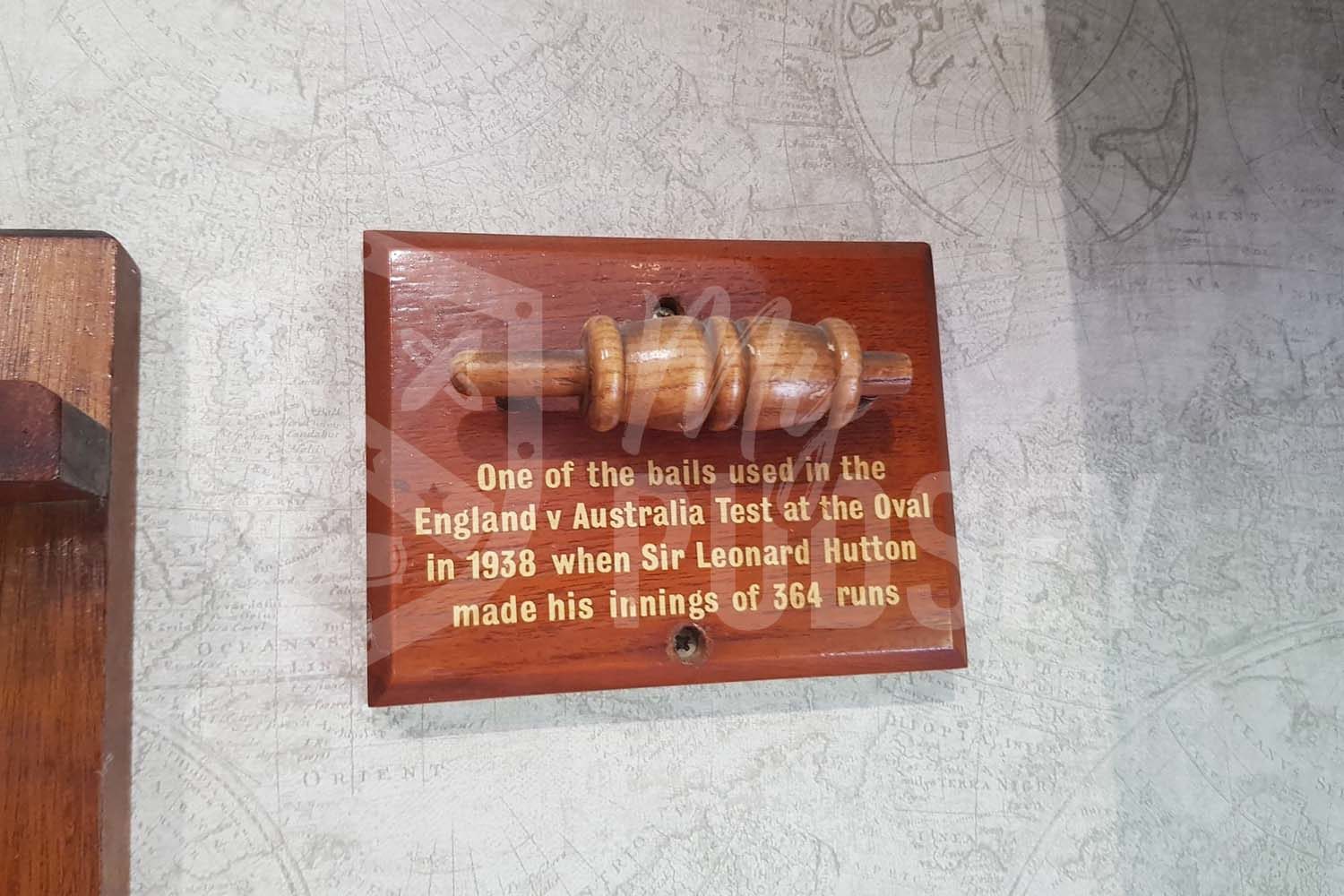
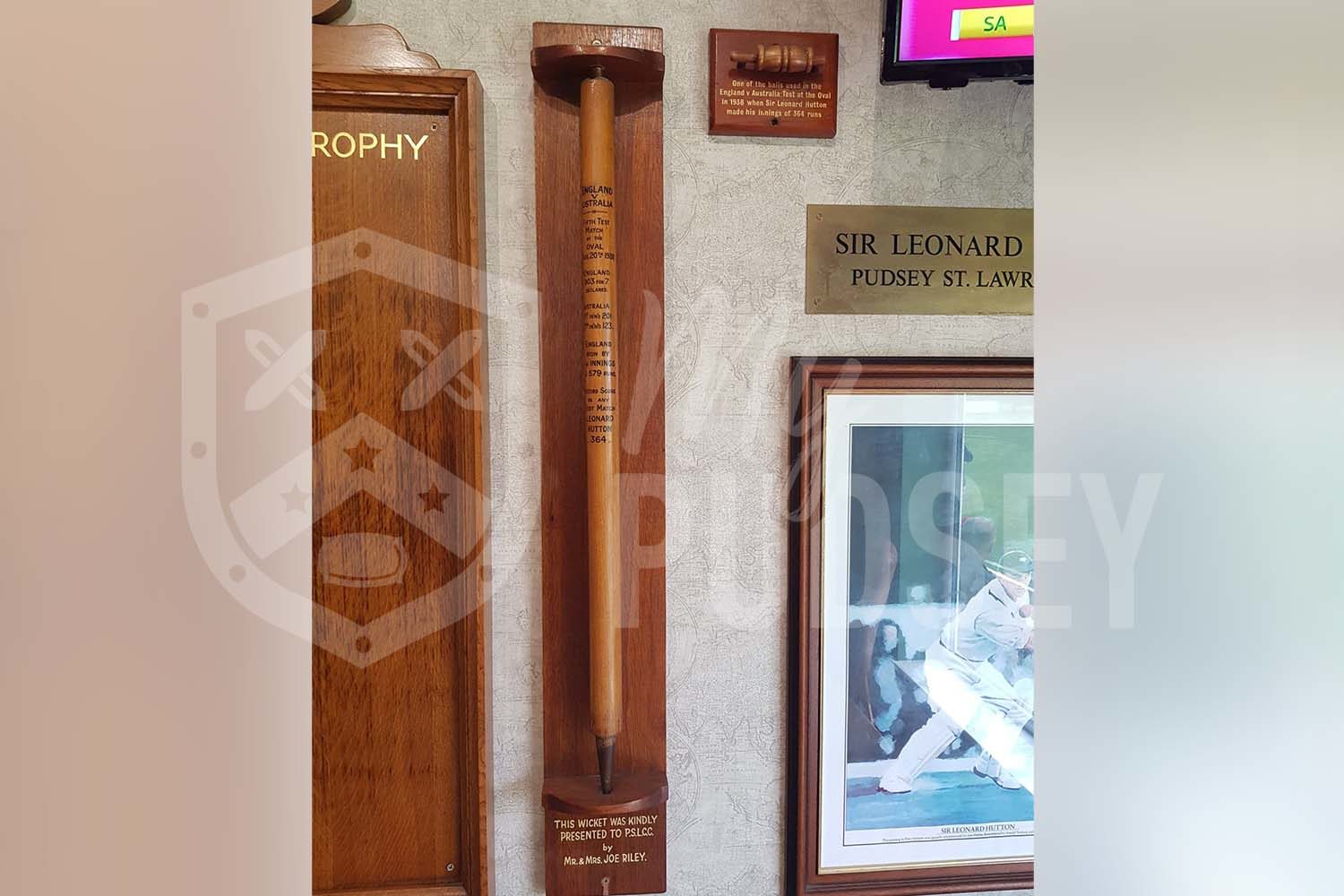
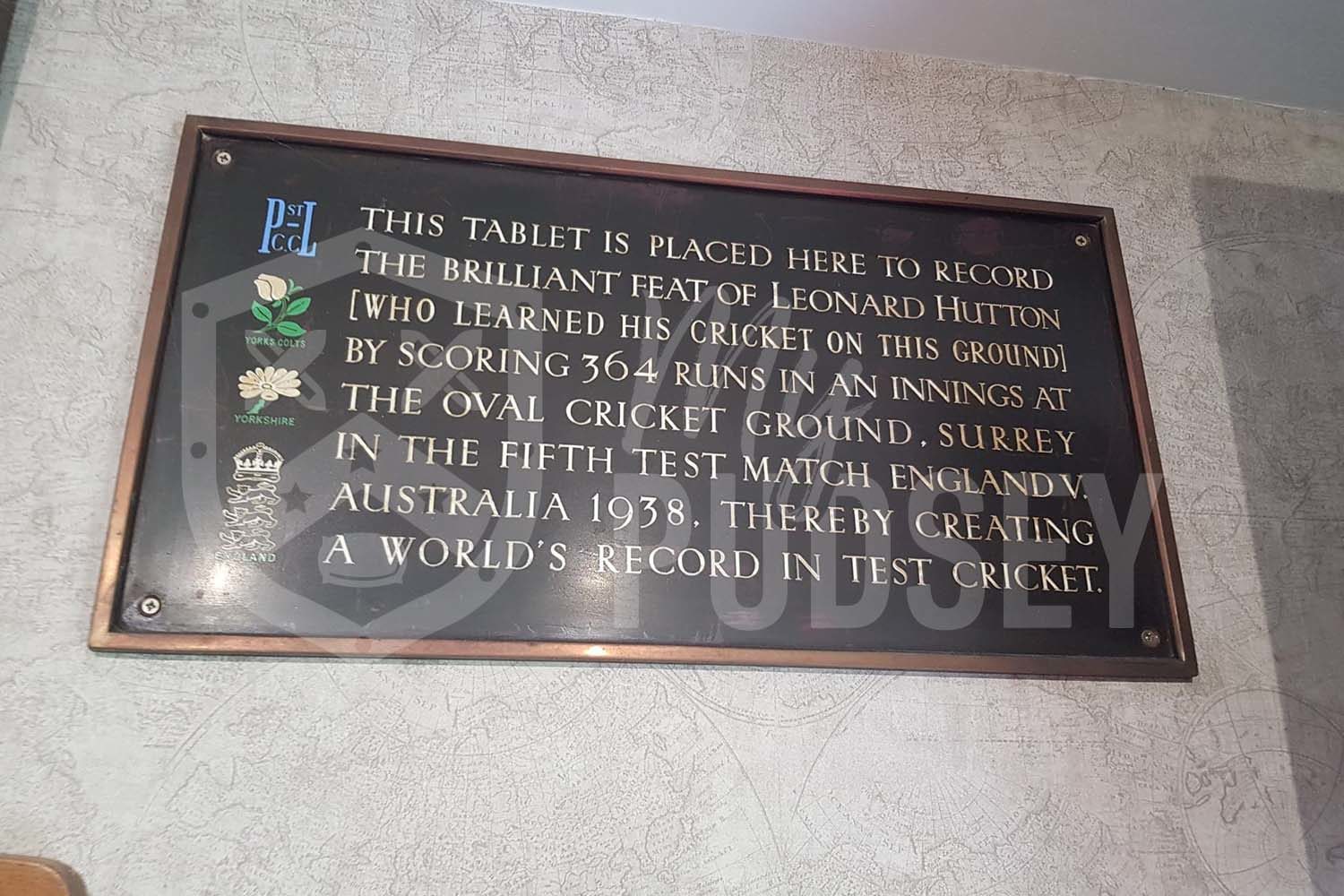
His most famous innings came when he set the record in 1938 for the highest individual innings in a Test match, scoring 364 runs against Australia at the Oval, and this remains the England Test record today. In doing so he broke his Australian rival Don Bradman’s 1930 record Ashes score of 334. Hutton passed Bradman’s score with a cut off Chuck Fleetwood-Smith, and extended his score to 364 before he was out, caught. Lasting for more than 13 hours, with 847 balls faced, Hutton’s innings was the longest in first-class cricket at the time. England eventually totalled a massive 903 runs.
Len’s flourishing career was interrupted by the outbreak of war in 1939 which stopped all first class cricket, this also brought down the curtain on Herbert Sutcliffe’s long career.
Len married Dorothy Mary Dennis, the sister of former Yorkshire cricketer Frank Dennis, on 16 September 1939 at Wykeham near Scarborough; they met at an end-of-season dance. They had two sons: Richard, who later played cricket for Yorkshire and England, and John.
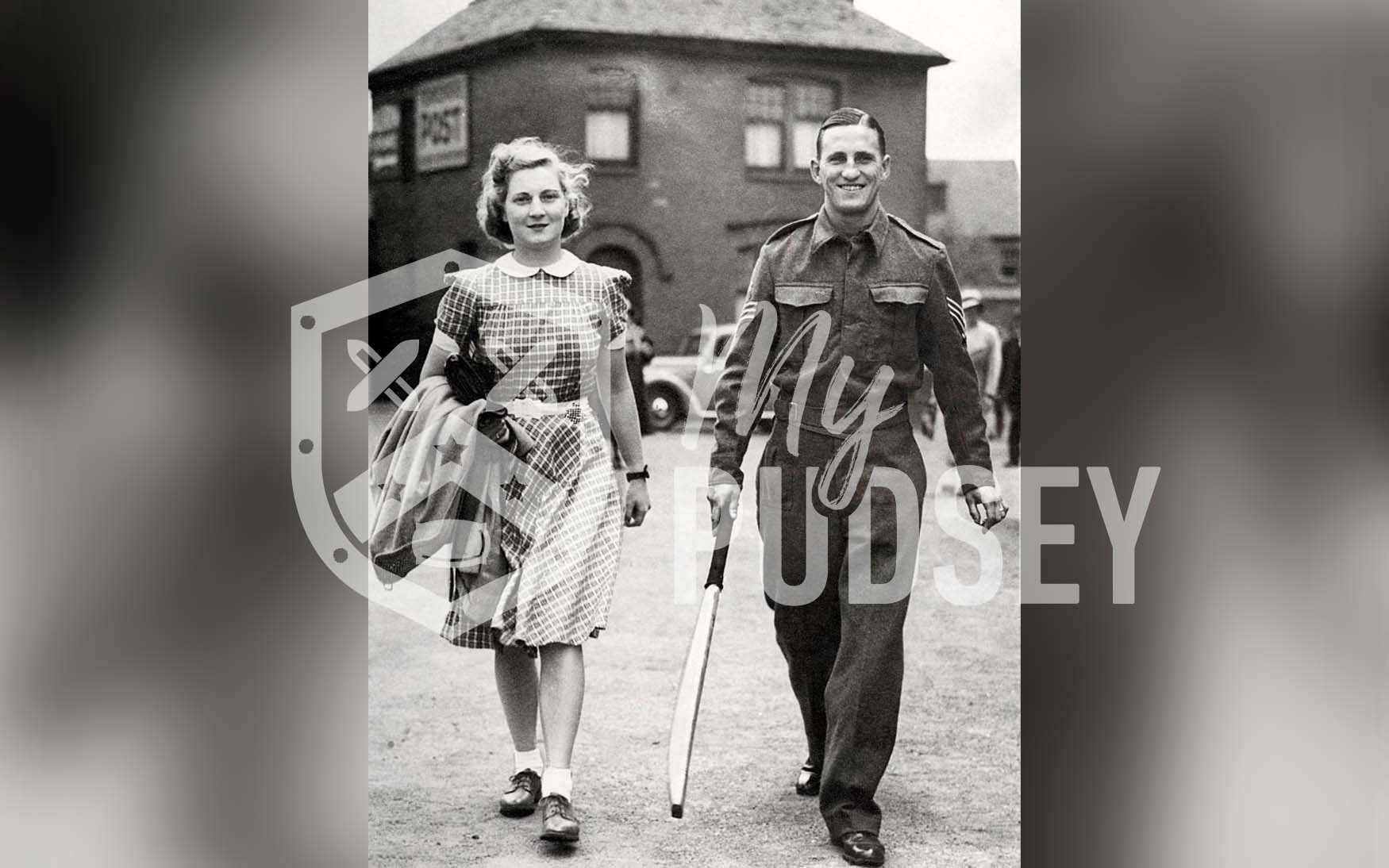
Len soon volunteered for the army and was recruited to the Army Physical Training Corps as a sergeant-instructor. In March 1941, on the last day of a commando training course in York, Hutton fell in the gymnasium when a mat slipped from under him. He suffered a fractured left forearm and dislocated his ulna at the wrist. He began to suffer increasing pain and underwent drastic surgery to graft bone from his legs onto the injured arm – the second attempt at the end of 1941 resulted with a left arm almost two inches shorter than the right. He was discharged from the army in the summer of 1942 and began work as a civilian for the Royal Engineers. Len resumed his cricket with Pudsey St Lawrence in 1943 until 1945, batting successfully and helping the team to win the Priestley Cup.
This was something of a miracle as the arm injury meant that he had to adjust his batting style and lost some of his flourish. Its is a great testament to his professionalism that he eventually recovered his form back to pre-war levels (although my own grandfather Sid who watched him closely maintained that he was never quite as brilliant as before and had become more cautious with his batting).
Following the Second World War, Len was the mainstay of England’s batting – his new cautious style meant that he often carried his bat but drew criticism in some quarters, with expectations that he would continue to smash all the records.
In 1952, he became the first professional cricketer of the 20th century to captain England in Tests; under his captaincy England won the Ashes the following year for the first time in 19 years. In 23 Tests as captain, he won eight and lost four with the others drawn.
The pressure took its toll on Len though having carried the team with his prolific batting for so long, and he retired from regular first-class cricket during the 1955 season.
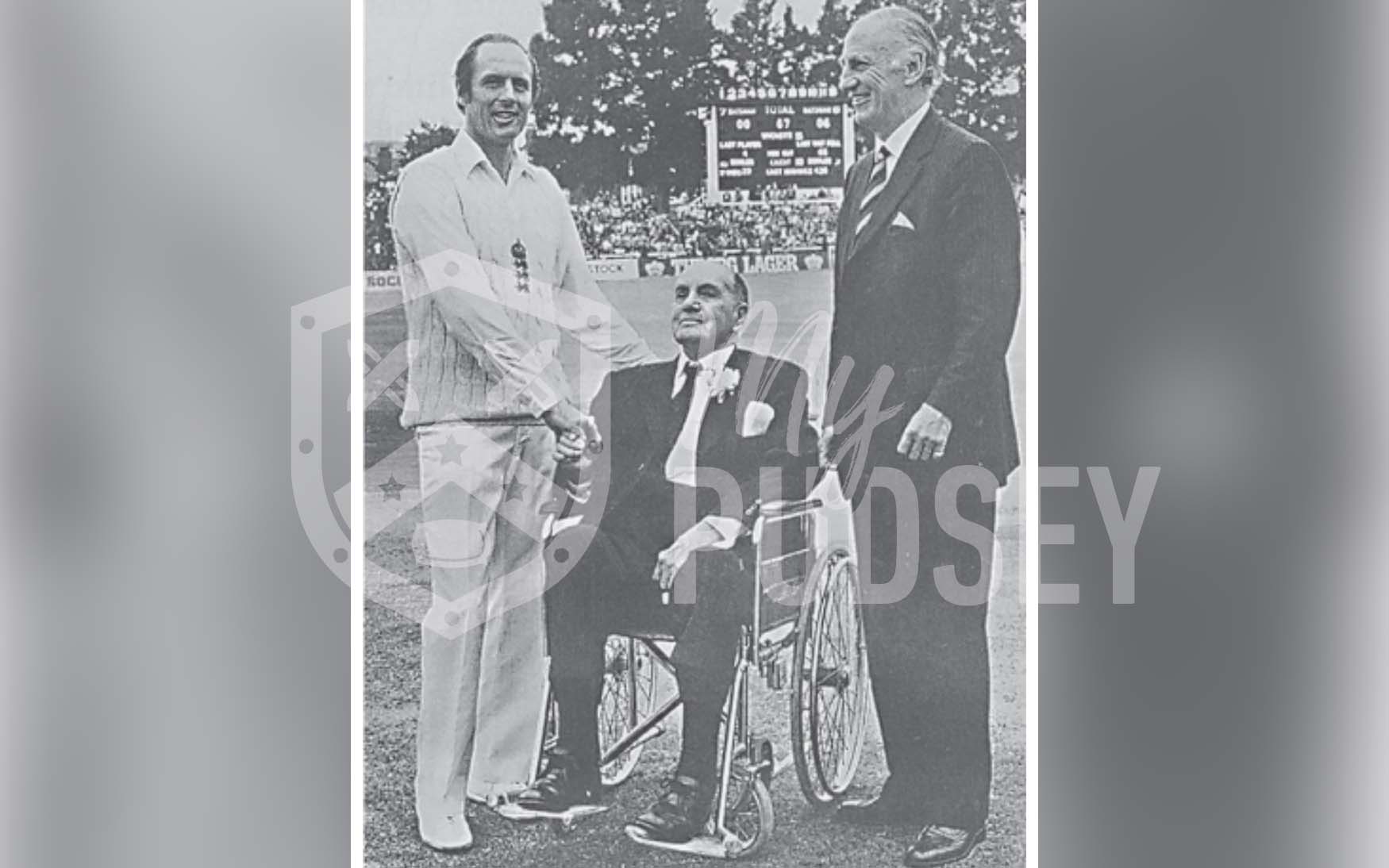
He was Knighted for his contributions to cricket in 1956, he went on to be a Test selector, a journalist and broadcaster. He also worked as a representative for an engineering firm until retiring from the job in 1984. Len remained involved in cricket, and became president of Yorkshire County Cricket Club in 1990. He died a few months afterwards in September 1990, aged only 74.
And the close of that venerable innings brings us nicely to the Tea Break. When we resume play in part 3 “The spirit of Pudsey Cricket” we will look at the legacy that these greats have left us and how cricket still flourishes today in our proud Borough of Pudsey.
“Where are Booth, Sutcliffe and Hutton!” I hear you cry – hang on to your chips they are in the next instalments.
Look out for part 2 “The age of Legends” and part 3 “The spirit of Pudsey Cricket”.
Appeal from Pudsey St Lawrence Cricket Club:
As we continue to plan for our impending clubhouse extension we are asking members and club friends to search their attics, lofts and albums for any St Lawrence items such as photos, clothing, cricket related artefacts. Basically anything PSL that we may be able to display publicly in the new space.
We are not looking for anything specific, just items that are of interest, quirky or not already displayed in the main clubhouse. This can include items linked to our great players, Hutton, Sutcliffe, Major Booth.
If you have an item of interest that way may be able to use then please contact Chris Gott or Michael Stein to discuss further.
PSCLCC:
https://pudseystlawrencecc.co.uk
Pudsey Congs:
https://www.pudseycongscricket.com
With thanks to David Arundale, Ralph Middlebrook and everyone at Saint Lawrence and Congs CC.